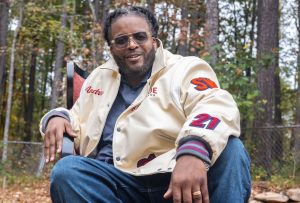One Sunday while sitting around the dinner table, Louise and I began to tell Daddy stories, the ones that stretched back to the early days of his preaching life. Since I was born 12 years after he “made a preacher,” as our folks said back then, I could only contribute what he had told me about those days, not what I had seen.
Daddy, raised hard in the Appalachian foothills, had escaped to make a better life for himself when the Lord called and he eventually answered, fighting the calling for a while and running as hard as man can until he succumbs to the Holy Spirit.
There was nary a doubt for Ralph Satterfield that God’s calling was specific: Go back to the mountains and the people he knew best. So it was that he was ordained and took up pastoring tiny churches that held services only two Sundays a month. That way, in the neighborly fashion of who they were, they could share a preacher with another church. He preached at one church on the second and fourth Sundays and the other on the first and third Sundays.
We began talking about his first church, one infamous for its struggles between the saints and sinners. It was a mountain community known for producing some of the finest moonshine in the Southeast. That created chasm that was long and deep, sometimes splitting families. There were two kinds of people there: those who loved the Lord with all their hearts and those who ran from Him with all their might.
When I was 13, Daddy and Mama had taken me back that to little tired-looking clapboard church. Daddy eased the car along the crunching gravel and parked near the cemetery. For a long time, he stared at the graves, thinking silently to himself until finally he said quietly, “I buried more men in that graveyard that died with their shoes on than died with them off.”
“What?” I asked. My innocent mind couldn’t decipher his words.
“Most of ‘em killed, shot down in moonshinin’ disputes.” He shook his head sadly. “Few died natural deaths.”
Louise recalled that a man had been killed in a wreck and then three weeks later, his wife died in another wreck, leaving behind a 3-year-old girl.
“At the grave, that little girl stood at the edge and looked down. She said, ‘They put my daddy in a box and put him in a hole like that and he never came back.’ I was 5,” Louise recalled, “and I never forgot that.
In those days, people turned out for church in a way not seen in decades. The church was packed to standing room only, so many men, who had given up their seats to the women, filled the churchyard and listened to the service through open windows.
One Sunday, Daddy stood in the pulpit and asked, “Who remembers what I preached on when I was here two weeks ago?”
Not a word was spoken until a 4-year-old named Charlie Grant, a precocious child, spoke up. “Ralph, I do. You preached about the rooster crowin’ three times.”
Daddy laughed. “That’s right, Charlie.” He looked across the congregation. “The Bible says that a child shall lead them but the rest of ‘uns oughta be ashamed.”
One revival proved to be a goldmine for moonshine runners who cleverly parked their cars in the shadows, waited until the meeting broke then fell into line with the cars leaving the church. Undetected and unsuspected by the law, they easily smuggled out their contraband.
Tink, amazed by the stories he heard, finally asked in a voice filled with awe, “When did your family go from living in black and white to living in color? This is like an old TV show.”
It was a compliment for Tink knows this as well as I do: Some stories play more powerfully in black and white than color.
I’m glad I’ve seen both.
[Ronda Rich is the best-selling author of “There’s A Better Day A-Comin’.” Visit www.rondarich.com to sign up for her weekly newsletter.]












Leave a Comment
You must be logged in to post a comment.